In the expanse of the industrial packaging world, the speed and consistency of the capping mechanism are critical to product integrity, safety, and brand image. The selection of capping machinery is a crucial step to be made by manufacturers who work in large volumes, as it directly influences the level of throughput, the cost of running the machines, and the control of quality. The rotary capping machine has emerged as the technology of choice in high-speed and demanding production environments.
This handbook offers an in-depth analysis of rotary capping machines that are targeted at production managers, packaging engineers, and decision-makers. In the work, we will review the principles on which the machine is based, its technical characteristics, its various uses, as well as the main criteria according to which it is necessary to choose a machine that will suit you specifically in your operational needs.
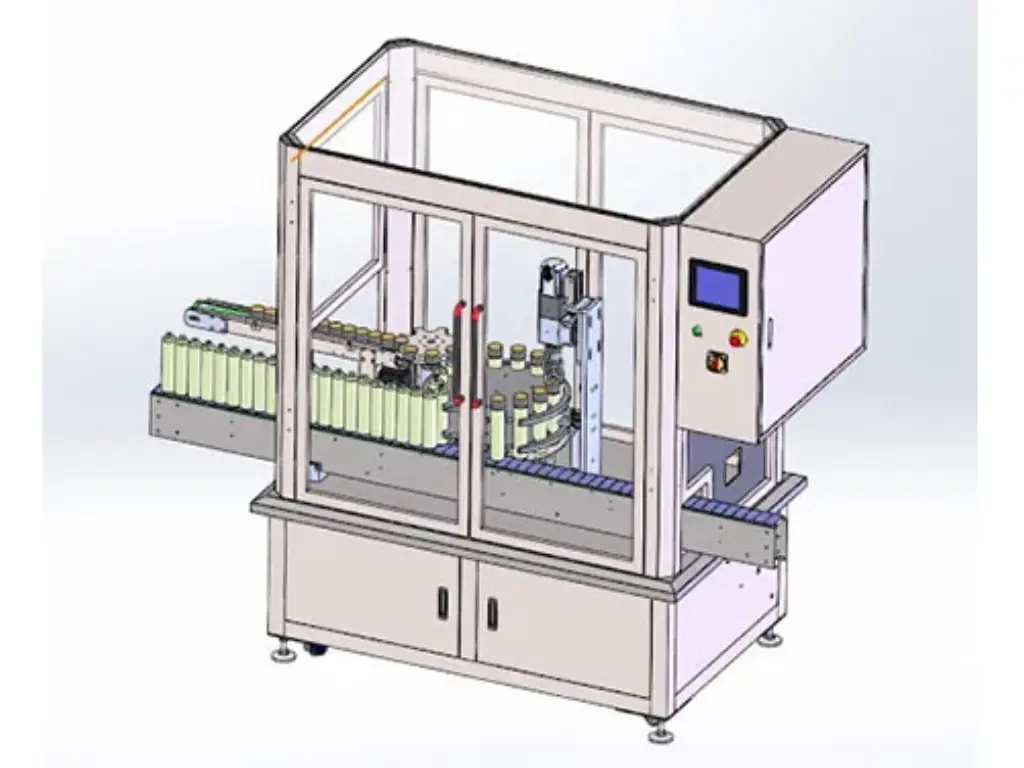
What Is a Rotary Capping Machine?
A rotary capping machine is an automated packaging machine that applies and fastens the caps on containers in a continuous and high-speed process. The key feature of it is that it consists of a rotating turret, or carousel, that carries several capping heads. Containers are introduced into the machine and timed to match the rotating turret, capped in one rotation, and ejected back to the production line.
The main working philosophy is constant movement. Unlike the other system, which requires the container and capping head to stop to perform this capping action, the rotary capper does the whole process as the container and the capping head are in a continuous and fluid motion. This is its major design that makes it fast and efficient.
To have a better idea of its location in the market, it is helpful to define it in comparison with other frequently used types of capper:
- Inline Capping Machines: These systems put caps on containers that are transferred in a straight line on a conveyor. Capping is generally done by sets of spinning wheels or belts that seal the cap as it goes round. With good application, they are slow compared to rotary systems.
- Intermittent Motion Capping Machines: These are typically single-head chuck machines that will stop each container under a capping station and apply and tighten the cap, then move the container on. Such a start-stop cycle means that throughput is inherently limited and is generally more appropriate in a lower-speed production line or where a highly specific, complex closure is required.
The rotary capper, by eliminating these pauses, is engineered specifically for operations where maximizing output without compromising quality is the primary objective.
How Rotary Capping Works: Continuous Motion Explained
The high throughput of a rotary capping machine is directly attributed to its continuous motion design. The key to recognizing the efficiency of this process is to understand it. The flow of operations is a finely timed mechanical dance that is aimed at attaining maximum velocity and uniformity.
- Container Infeed: Containers are delivered on an outlet conveyor belt and are directed into an infeed star wheel. This is a star-shaped component and is machined with the pockets that exactly fit the diameter of the container. It locks each container in and accurately times its entry into the main rotating turret.
- Synchronization with Turret: The rotating infeed star wheel causes each container to be placed on a platform directly under an open capping head on the main turret. At this point, the container swings around in a circular motion in complete synchronization with the turret rotation.
- Cap Application and Sealing: This is done when the container is rotating with the turret, and the cap delivery system automated system is put on the opening of the container. The capping head above it immediately moves downwards and holds the cap and exerts the required pressure/torque to seal it. All this (placing of the cap and the subsequent tightening) is done whilst the turret is still revolving.
- Container Discharge: By the end of the capping cycle, the container at this stage is firmly closed, and it reaches the discharge point of the circular path. A discharge star wheel gently deposits it back onto the main conveyor, and it continues to the next part of the packaging line (e.g., case packer or labeling).
This seamless, continuous flow means that multiple containers are being capped simultaneously at different points of the turret’s rotation. A machine with 12 heads, for example, is performing 12 capping operations per single revolution. This fundamental design difference is what allows rotary cappers to achieve speeds of several hundred bottles per minute (BPM), a level of efficiency unattainable by intermittent or most inline systems.
Types of Rotary Capping Heads and Compatible Caps
The biggest advantage of rotary capping machines is that they can be adapted to fit several different packaging forms by the use of different kinds of capping heads. All the head types are designed to fit a certain type of closure to guarantee that bottles are closed with the right torque, consistency, and integrity. Based on the differences between capping heads, manufacturers are in a position to choose the right solution to fit their product line and ensure both quality and performance.
| Capping Head Type | Compatible Cap Styles | Typical Industries | Key Advantage |
| Screw Cap Head | Plastic or metal threaded screw caps | Beverages, food jars, pharmaceuticals, and household chemicals | Precise torque control for consistent sealing |
| Snap Cap Head | Press-fit or snap-on closures | Personal care, cosmetics, and certain food products | High-speed, simple application with a consumer-friendly opening |
| Pump & Sprayer Head | Lotion pumps, trigger sprayers, fine mist atomizers | Cosmetics, cleaning products, and healthcare | Secure handling of irregular closures, accurate orientation |
| ROPP Head | Aluminum roll-on pilfer-proof caps | Wine, spirits, and pharmaceuticals | Tamper-evident sealing with formed threads and a safety band |
| Lug Cap Head | Metal twist-off (lug) caps | Sauces, jams, condiments, hot-fill food products | Uniform torque for vacuum sealing and product safety |
- Screw Cap Heads (Threaded Closures)
Screw cap heads are the workhorses of high-speed beverage and pharmaceutical lines. Supplied with servo-controlled torque control, they ensure every PET water bottle and glass medicine vial gets the same seal, preventing water or medicine leaks and ensuring regulatory compliance. In carbonated drinks, the torque must be precise to resist internal pressure without damaging the thread.

- Snap Cap Heads (Press-Fit Closures)
Snap heads exert force downwards and are therefore appropriate to be used on cosmetics and personal care products where convenience is a primary demand. As an example, high-volume lotions or cream packaging can utilize snap heads that enable lines to be run at hundreds of units per minute with a consistent feel of a click-to-close to the consumer.
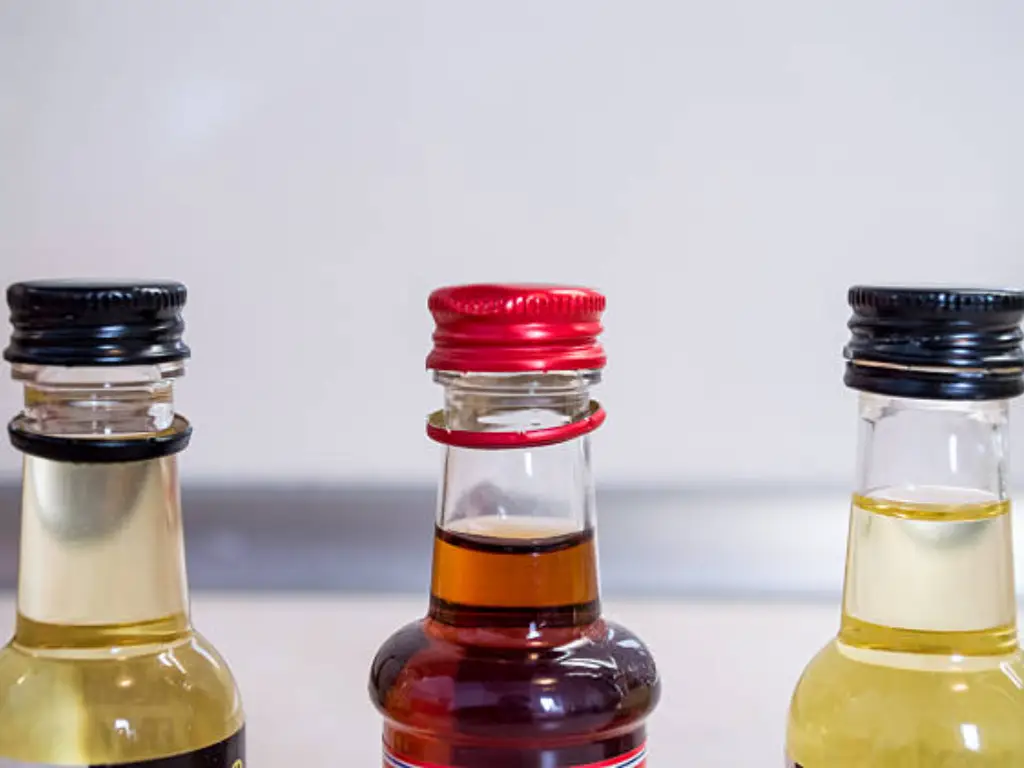
- Pump and Sprayer Heads
These are special closures that deal with irregular and delicate closures like trigger sprays or lotion pumps. In a cleaning product line, such as pump heads have spring-loaded grippers to orient and secure the sprayer during capping to prevent misalignment, which can render the trigger unusable. This can deliver dependable performance in markets where consumer safety and ease of use are the priority.

- ROPP Heads (Roll-On Pilfer-Proof Closures)
Wine and spirits bottling cannot do without OPP heads. The head does more than screw a cap on: it rolls the thread and tamper-evident band into the aluminum closure, forming a secure seal combined with a visible warning of tampering. In medicines, this is useful to manufacturers since it allows them to comply with stringent anti-counterfeit laws.

- Lug Cap Heads (Twist-Off Closures)
Lug heads are popular in the food industry when the product needs to be vacuum sealed, such as sauces, jams, and hot-fill products. When capping, the machine exerts equal force to the cap so that it fits in the lugs of the glass jar and maintains freshness even after undergoing the thermal process. One of the reasons lug capping heads are used as the standard across the world in shelf-stable foods is their reliability.
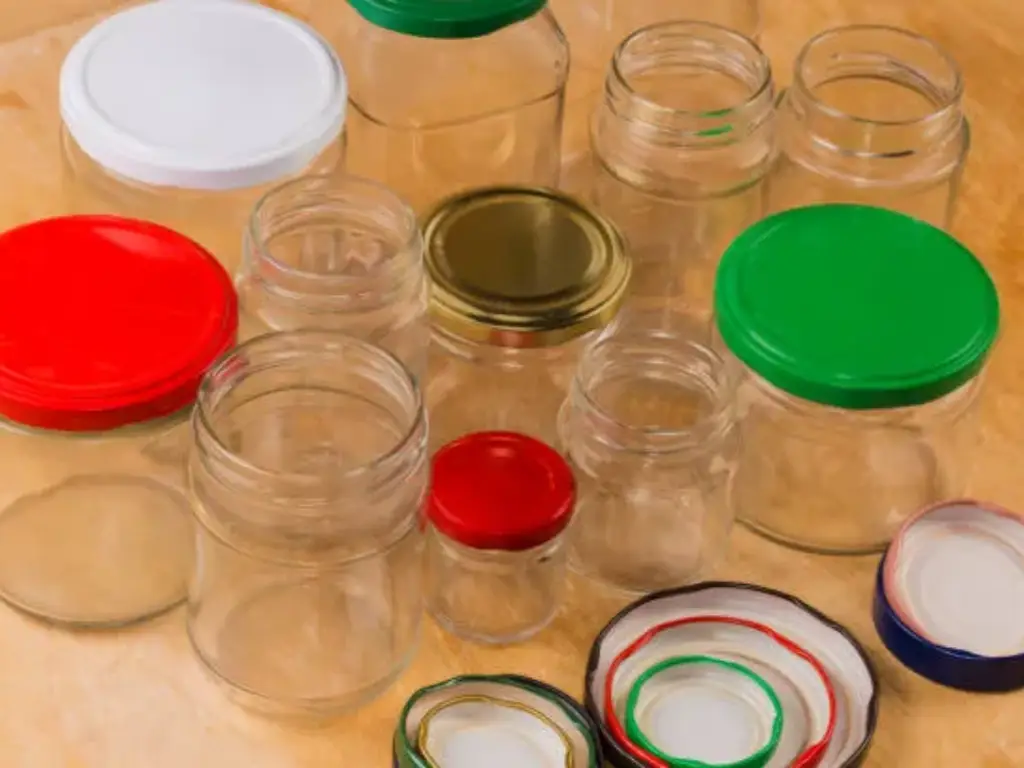
Key Features That Set Top Capping Machines Apart
Although any rotary capping machine is run in a continuous motion, a premium one is characterized by advanced technologies that increase precision, reliability, and user-friendliness. These are important distinguishing characteristics when comparing various models.
- High Speed & High Precision: The two most important selling points go hand in hand. The mechanical construction is able to operate at high speeds, but it is the control systems that ensure accuracy at high speeds. Look at the sturdy construction that is vibration-free and stable during operation.
- Servo-Driven Torque Control: This is the ultimate in capping technology. In contrast to conventional magnetic or mechanical clutches, which may wear and become less accurate as time goes on, servo motors have very precise and repeatable torque control. Torque values are digital-adjustable by each capping head using its servo motor. This eliminates over-tightening (which can break the caps or containers) and under-tightening (which may result in product leaks and spoilage).
- PLC + HMI Control: The functioning of modern machines is governed by a Programmable Logic Controller (PLC), the industrial-grade brain of the scene. The PLC is programmed by the operator who communicates with the PLC using a Human-Machine Interface (HMI), which is usually a color touchscreen. This is a combination that offers major benefits.
- Recipe Management: Save settings (torque, speed, container height) of different products. Changeovers are as easy as a choice of new recipe on the screen.
- Real-Time Diagnostics: The system can check its performance, present warning messages to operators concerning a missing cap or improper application of torque.
- Ease of Use: Graphical user interfaces make the machine easy to operate and lower the level of specialized technical knowledge required to operate the machine.
- “No Bottle, No Cap” Detection: Sensors are integrated that can detect the presence of a container and, therefore, will not release a cap. This minor yet essential feature avoids waste of caps and keeps the machine clean of fallen caps, and minimizes downtime.
Technical Specifications You Should Know
Technical specifications need to be evaluated thoroughly by engineers and purchasing managers so that they can be sure that the machine they have chosen can fulfill the present and future production needs. When doing comparisons of models, it is important to look at the following parameters:
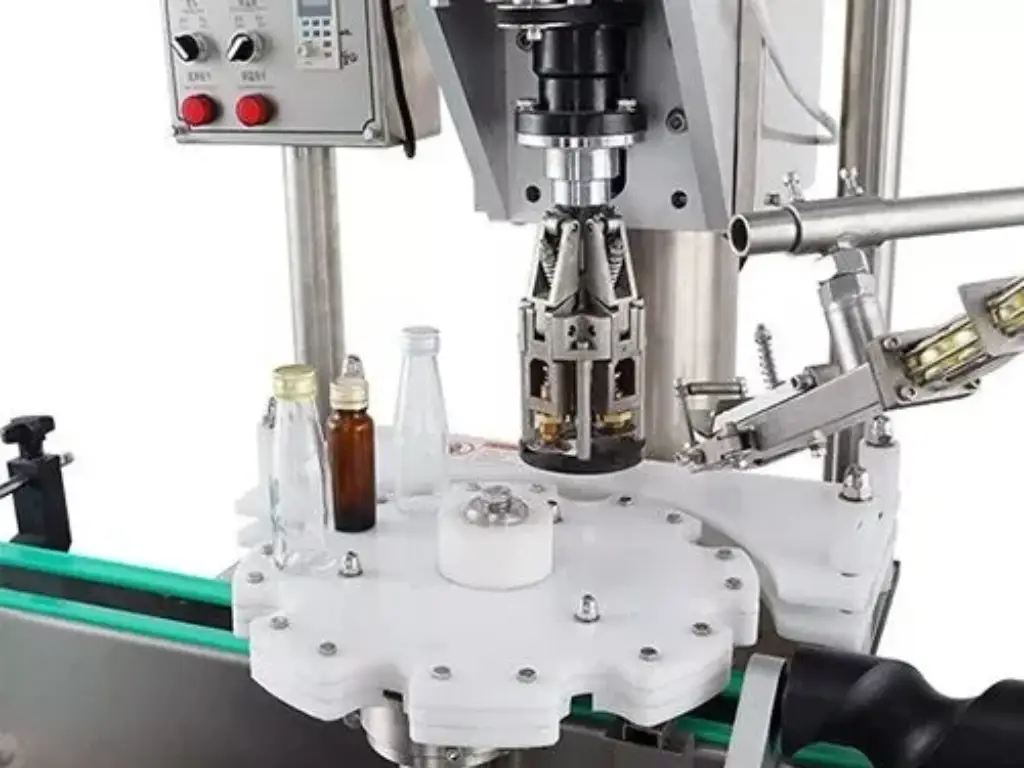
- Capping Speed (BPM/BPH): Expressed in bottles per minute (BPM) or bottles per hour (BPH), this is the machine’s maximum theoretical output. It is crucial to choose a machine with a capacity that exceeds your current peak demand to allow for future growth.
- Number of Capping Heads: This is proportional to speed. Machines may consist of 3-4 heads on low-speed rotary applications, and up to 24 heads or more on high-speed beverage or pharmaceutical lines.
- Cap and Container Size Range: Each machine is engineered to work within a certain range of cap diameters and container height/diameters. Make sure that your entire product line can be produced within these requirements, and give the manufacturer the specifics of container and cap dimensions. Also, ask the price of the possible need to change parts (so-called change parts, such as star wheels and cap chucks) to change between sizes.
- Power and Compressed Air Requirements: Make sure that the power requirements of the machine (Voltage, Phase, Hz) and the amount of air (CFM/PSI) used by the machine are within your facility limits.
- Machine Dimensions and Footprint: Rotary cappers are very large machines. Check the overall dimensions (length, width, height) of the machine to make sure they can fit the previous or intended production line layout.
A close reading of these specifications will allow a direct, objective comparison between manufacturers and models, which will help you make a final decision based on data-based criteria.
Use Cases by Industry: From Beverage to Pharmaceuticals
Rotary capping machines are invaluable in a broad selection of industries since they feature versatility and speed. Every industry uses technology to address the product and regulatory requirements.
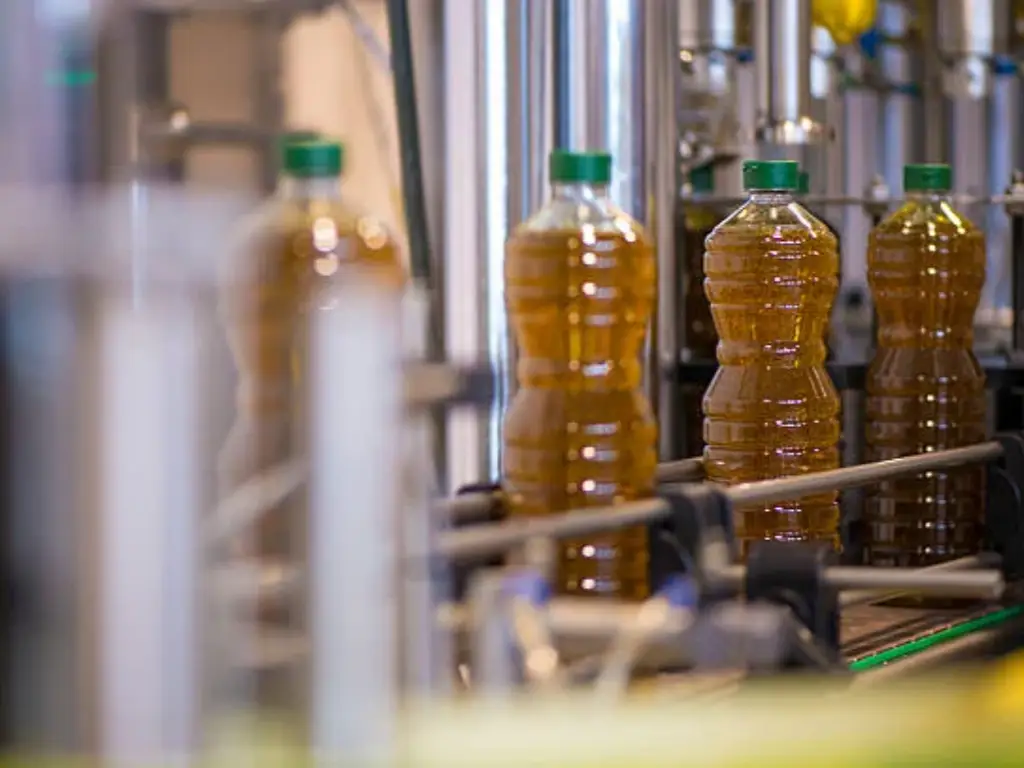
- Minuman: It is a major market. Fast rotary cappers are fundamental to bottling water, soft drinks, juices, and spirits, with simple screw caps at speeds of 800 BPM or more.
- Food and Sauce: Rotary systems are used to apply lug/twist-off caps to glass jars of pasta sauce, salsa, and jams, and may be combined with vacuum sealing technology. They can also be used in the snack food industry to seal plastic jars of nuts, pretzels, and other dry foods. They also deal with screw caps of condiments, dressings, and oils.
- Kosmetik dan Perawatan Pribadi: This sector has an immense diversity of closure types used. Rotary cappers can be programmed to work with pump caps on lotions, trigger sprays on cleaning agents, and fancy screw caps on high-end creams and serums, where not only a good seal must be made, but appearance is also important.
- Obat-obatan: This is also a highly regulated industry where accuracy and record-keeping are essential. Rotary cappers can offer the torque repeatability essential to child-resistant closures (CRCs) and tamper-evident seals. Their stainless steel structure and clean design make them applicable in sterile and cleanroom environments.
- Bahan kimia: In items such as household cleaners, automotive fluids, and agricultural chemicals, safe closure is an issue of safety. Rotary cappers provide consistent torque to ensure that closures are attached to guard against life-threatening leaks.
Common Challenges and How Rotary Cappers Solve Them
Rotary capping technology is frequently implemented by manufacturers as a solution to certain challenges that are persistent with manual or semi-automatic procedures. The table below is a summary of the most common problems and how rotary cappers can offer direct solutions:
| Tantangan | How Rotary Cappers Solve It |
| Inconsistent sealing and product leaks | Servo-driven torque control applies the same, pre-programmed torque to every cap, ensuring a perfect seal and virtually eliminating leaks. |
| Production bottlenecks and low throughput | The high-speed, continuous motion design keeps pace with fillers, eliminating bottlenecks and maximizing line output to meet growing demand. |
| High labor costs and repetitive strain injuries | Full automation reduces reliance on manual labor, reallocates staff to higher-value tasks, and improves workplace safety. |
| Damaged caps or containers | Precision torque control applies only the required force, protecting closures and bottles from cracking, stripping, or deformation. |
How to Choose the Right Rotary Capping Machine
Finding the perfect rotary capper will require a meticulous analysis of your requirements with regard to the features of the available technology. The following checklist will help you make the decision.
Define Your Products (Current and Future):
- List all container types (material, shape, dimensions).
- List all cap types (style, diameter, material).
- Consider any new products planned for the next 3-5 years.
Determine Your Speed Requirements:
- What is the highest BPM of your current filler?
- What is your ideal production speed?
- What are your growth rates? Choose a machine that can meet the future increase in speed.
Assess Your Technical and Quality Needs:
- How accurate in torque do you need? Is it enough that it is a magnetic clutch, or is it required servo control?
- Are there certain industry needs (e.g., pharmaceutical-grade stainless steel, clean room compatibility)?
- What is the level of complexity of your changeovers, and what is an acceptable level of downtime?
Evaluate the Level of Automation:
- Do you require an integrated system with a cap sorter and an elevator, or would a floor-level hopper to easily load bulk caps suffice?
- What degree of control/diagnostics will you require of the HMI?
Consider Budget and Total Cost of Ownership:
- Calculate the start-up capital investment.
- Ask the price of the change parts of various products.
- Enquire about service and support, what maintenance is required, and whether there are spares available.
Systematically going through these points, you will be able to develop a comprehensive requirements document. This will help you to conduct fruitful negotiations with equipment suppliers and make the right investment decision in a machine that will become a fruitful and dependable cornerstone of your packaging operations in the years to come.
Where to Get a Rotary Capping Machine Quote
The right rotary capping machine chooses a trusted partner. Levapack is a leading Chinese manufacturer of professional capping machines with more than 15 years of experience, a 4000 m 2 modern factory, and 300 boosted customers around the world.
Our line of screw cappers, snap cappers, and rotary vacuum cappers is fully designed and constructed to include the latest in servo torque control, PLC+HMI control systems, automatic lid feeding, and high-level safety devices. Every machine is tested with 100+ containers and a 48-hour no-load period and is checked thoroughly to ensure long-lasting reliability.
Levapack integrates high-quality stainless steel (#304/316) with parts of leading world brands such as Siemens, Schneider, and SMC, which guarantees durability and EC and ISO compliance. Our solutions are capable of fast changeovers, custom designs, and are fully automated to suit different industry applications, helping you to maximize efficiency, reduce costs, and protect product integrity.
Contact Levapack specialists now to get a customized quote on your manufacturing requirement and how our rotary capping systems can improve your packaging line.

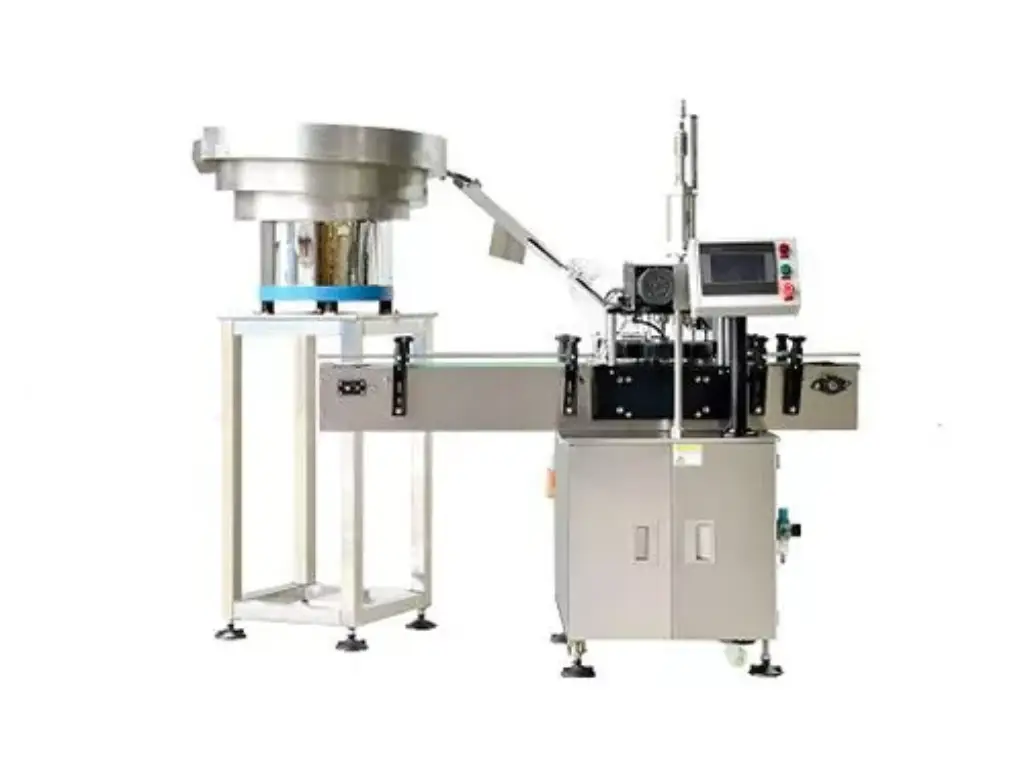

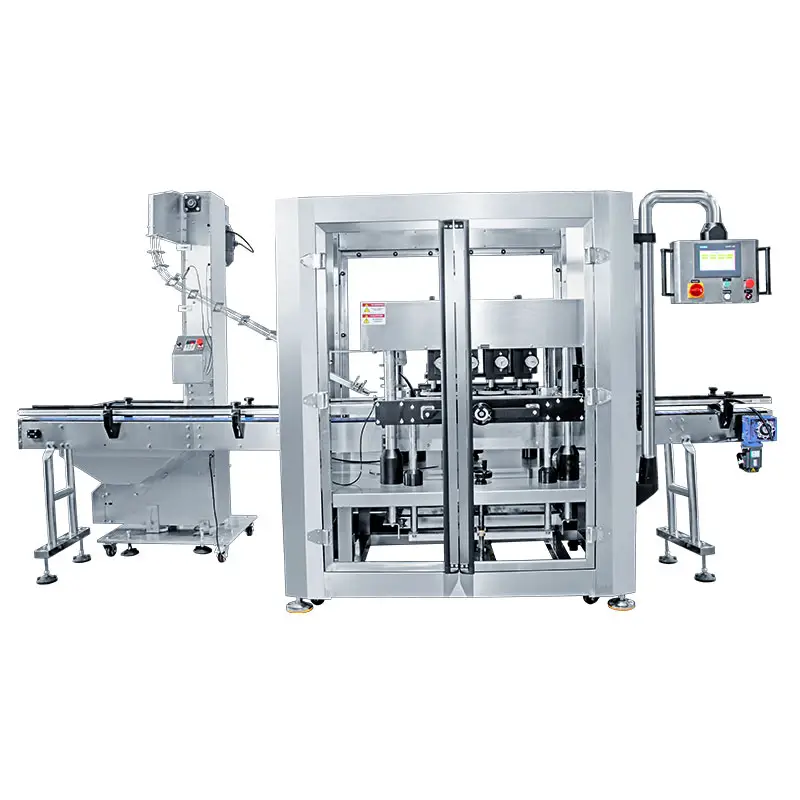


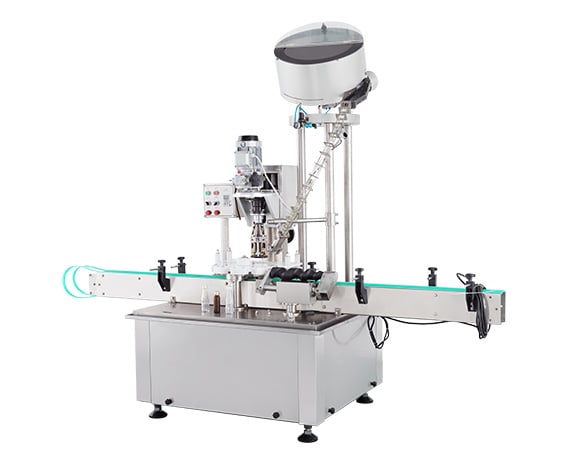


If you want to know more about capping machine manufacturers, please read this article: 10 Produsen Mesin Capping Teratas: Solusi Otomasi
Kesimpulan
The selection of the appropriate rotary capping machine is a critical decision concerning the future of your production line. Its constantly moving architecture is designed to shatter speed bottlenecks, bringing the high throughput necessary in modern manufacturing. The real value is, however, in combining this speed with precision. High-level functionality, such as servo-driven torque control, ensures all seals are repeatable and reliable, ensuring your product integrity and brand reputation. Taking the time to pick a system that will run according to your unique requirements, you are not only purchasing equipment; you are installing the best solution that can ensure long-term efficiency, quality control, and scalable growth in the competitive marketplace.




